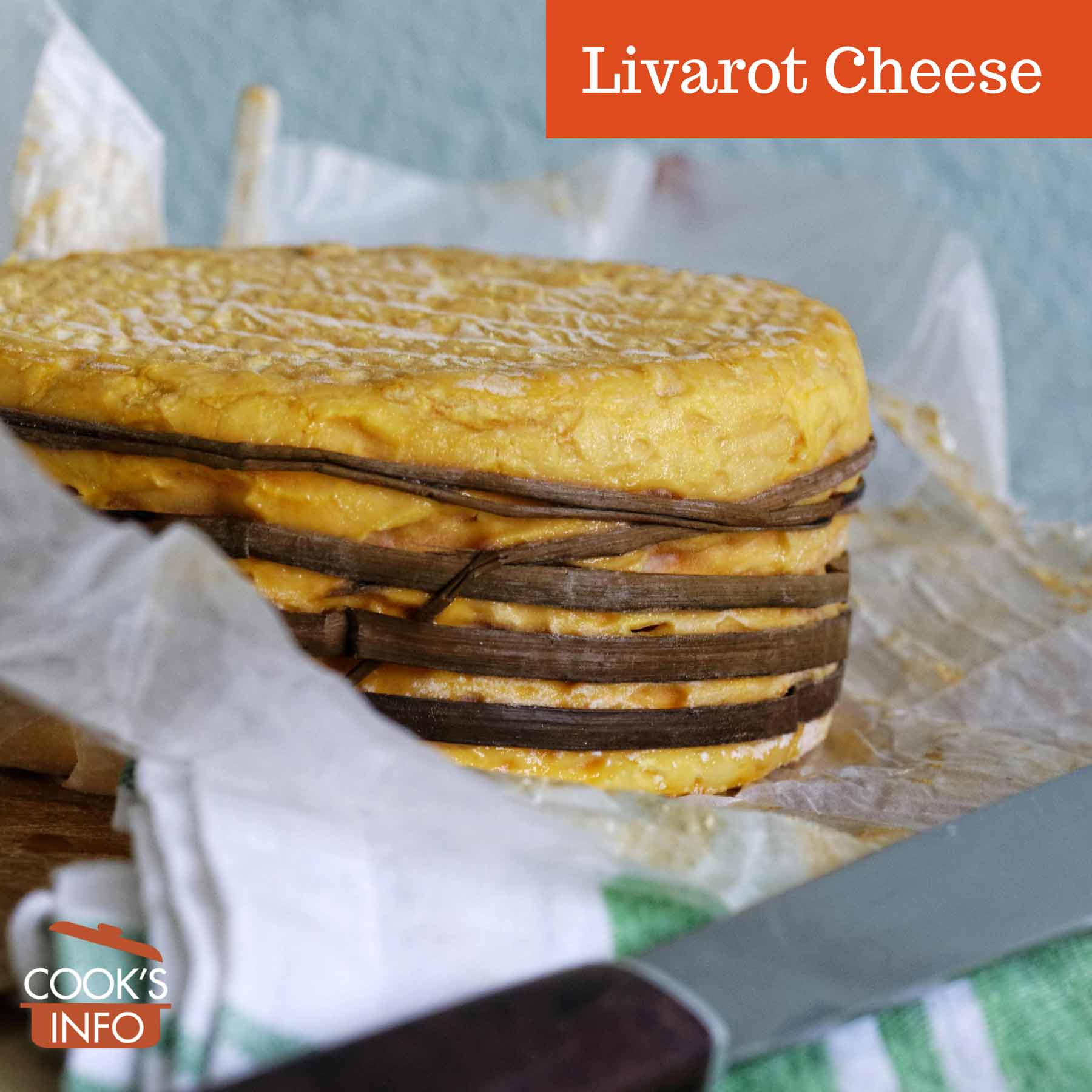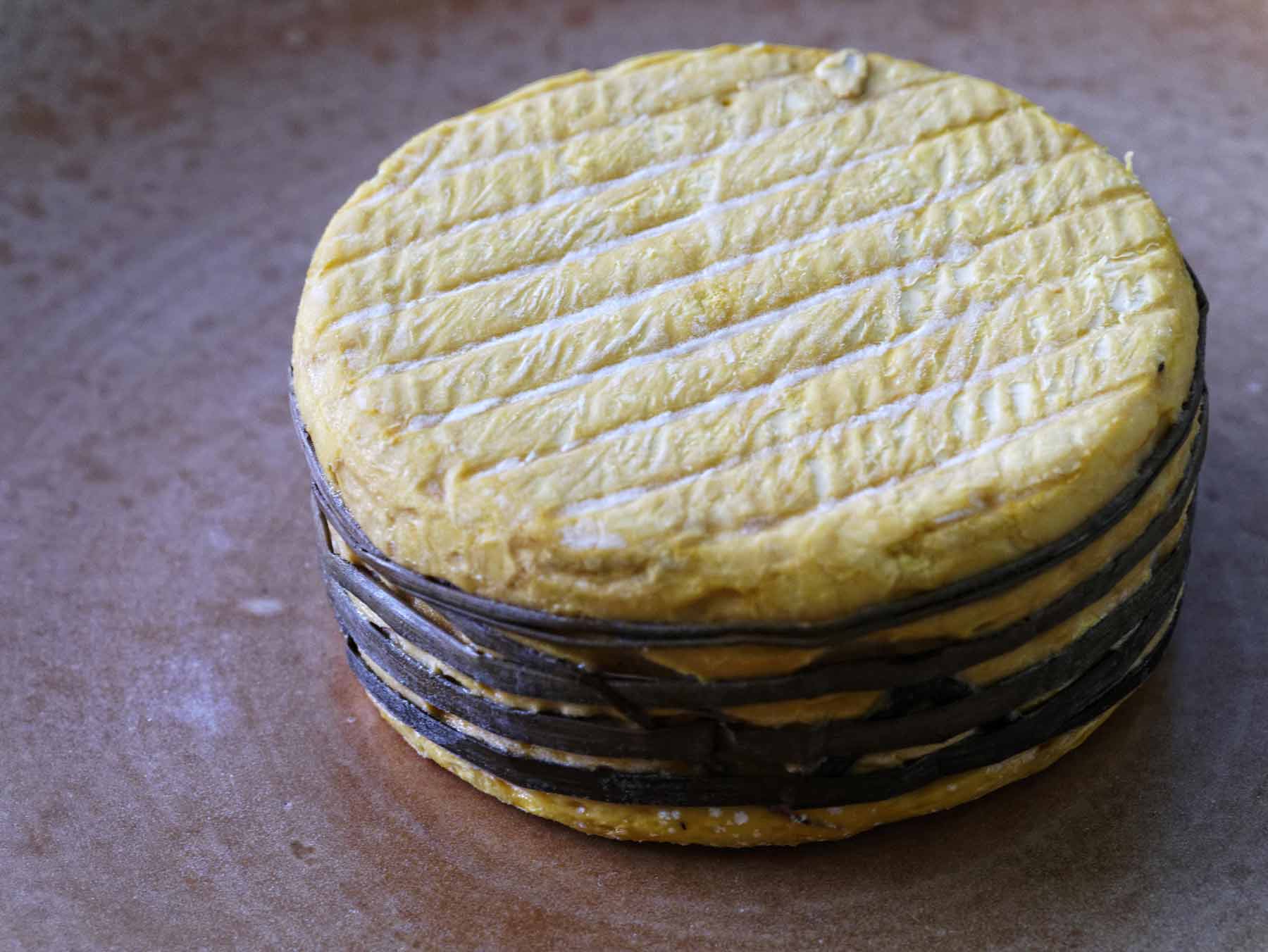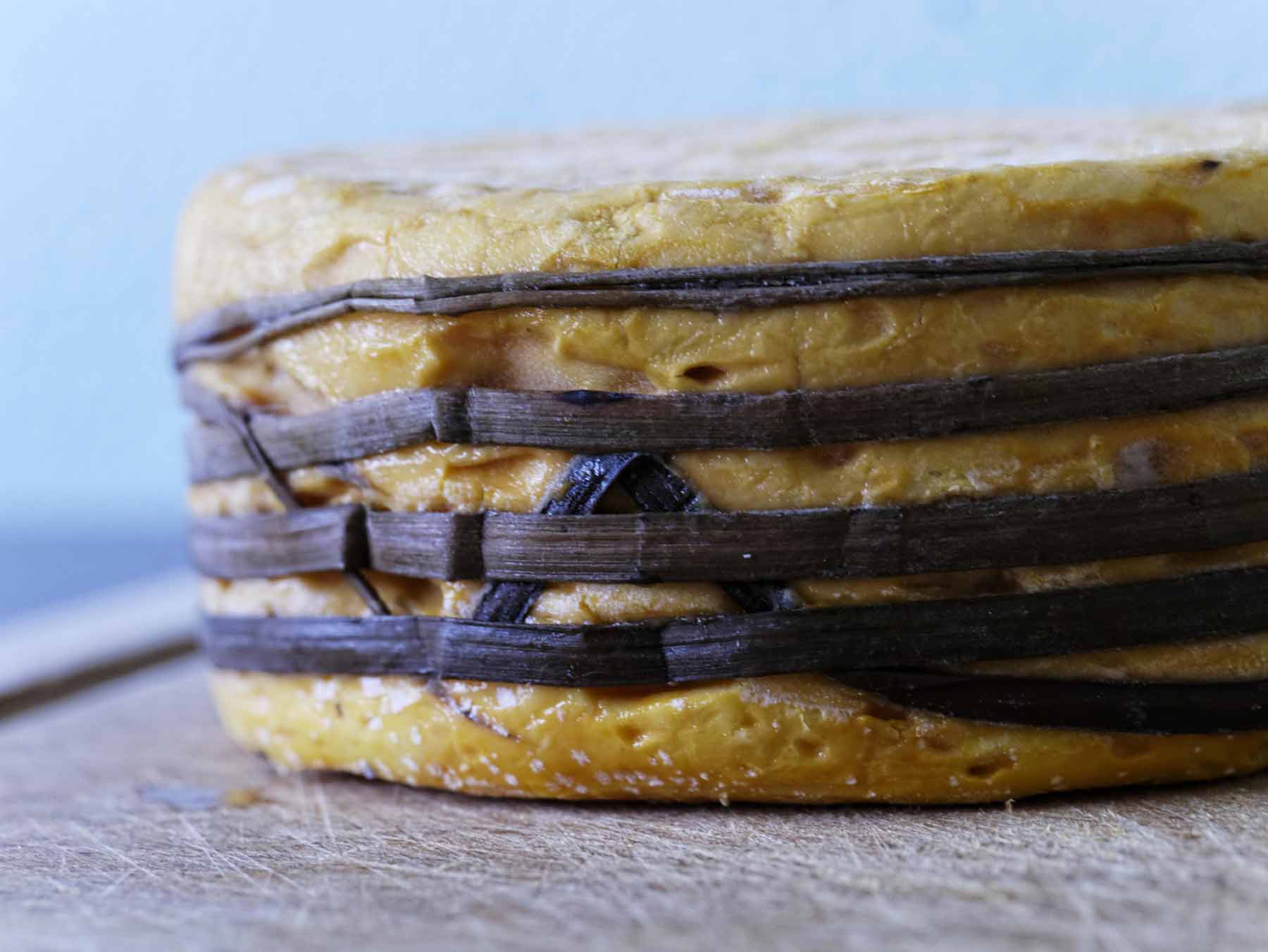
Livarot cheese. Max Straeten / morguefile.com
Livarot is a soft, creamy cheese with a washed, yellow-orange rind. The rind can be eaten; most of the strong flavour is in the rind.
It is made around Livarot in the Auge valley, Normandy, France. Most production is industrial now. One of the leading producers is the firm of Eugène Graindorge, started in 1910, in Livarot itself.
The cheese is sold bound on its sides by 5 bands of paper (the bands used to be greenish rush leaves.)
Livarot Cheese is made from raw milk from cow’s; in fact, by regulation, the milk must not be heated above 37 C (98.6 F).
When the milk is heated, rennet is added to curdle it, and the curd is cut twice. The curd is then drained, and packed into moulds. The moulds are let stand in a warm room for 24 hours, during which they are turned several times. The cheese is then unmoulded, washed, and salted. The cheese is let ripen for 3 to 4 months, during which it is washed several times.
Some of the yellow-orange colouring on the rind crust comes from a bacteria called “Bacteria linens“, but to reinforce the colour, the final wash is done with water coloured with annatto.
Each cheese is about 12 cm wide by 5 cm tall (5 inches x 2 inches), and weighs about 230 g (8 oz.).
A half-one is sometimes called a “Petit-Lisieux.”
If a Livarot Cheese is so ripe that it smells like ammonia, it is past it. Discard.

Livarot cheese. Max Straeten / morguefile.com
Nutrition
Livarot Cheese consists of 40% butterfat.
Equivalents
¼ of a cheese is 60 g, ½ a cheese is 120 g, ¾ of a Livarot is 135 g
History Notes
Some think that Livarot is the cheese that was called “Angelot” in the 1200s. Some date it back to the late 1600s.
It was described in print in 1708 by Thomas Corneille. The cheese was definitely known by the name “Livarot” at the end of the 1800s.
Traditionally, the cheese was just 10 to 15% butterfat, but the butterfat content was raised in the mid-1900s. The paper binding (originally rush leaves) is now an anachronism; it was originally meant to reinforce the lower-fat version of the cheese which had less body.
A producers’ association of Livarot Cheese was formed in April 1970. The cheese received its French AOC 1975.
Literature & Lore
Owing to the colour of Livarot Cheese and the number of bands, the cheese was dubbed in French “Le Colonel” (based on French Army uniforms.)

Livarot cheese. Max Straeten / morguefile.com

